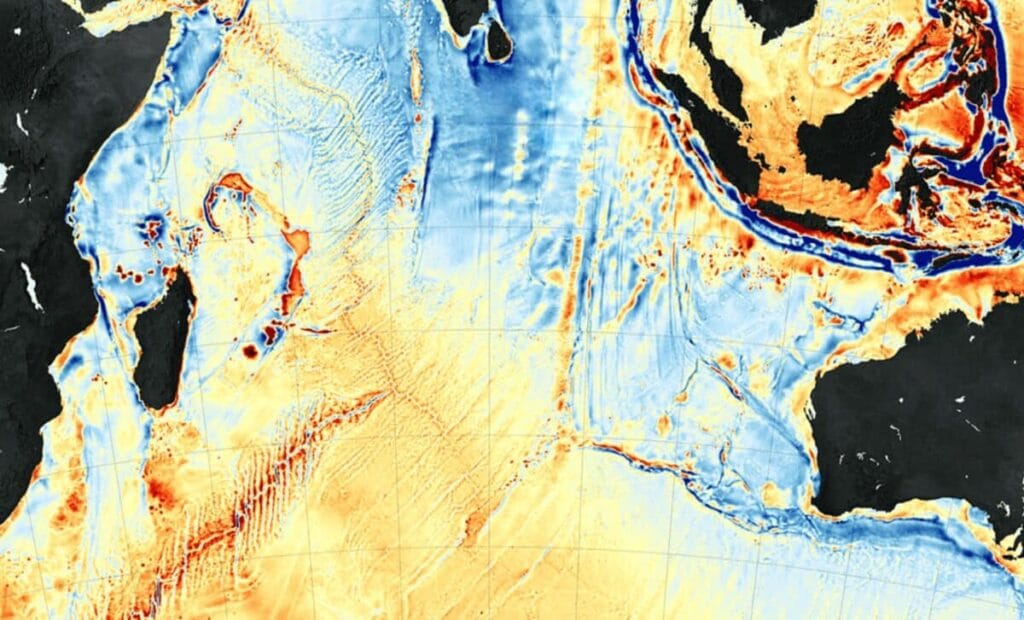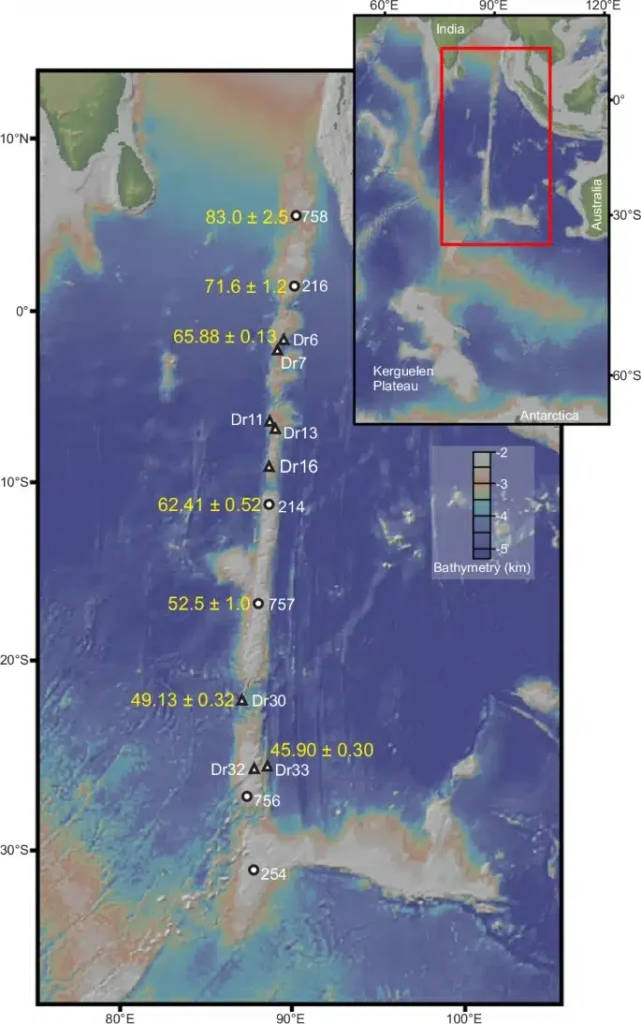An extensive volcanic ridge concealed beneath the Indian Ocean is undergoing lateral displacement—an occurrence that has taken geologists by surprise and may fundamentally revise longstanding conceptions of Earth’s tectonic evolution. A newly released study in Nature Communications reveals that the Kerguelen hotspot, the primary volcanic engine responsible for generating the Ninetyeast Ridge, has not remained geologically fixed over vast time scales as traditionally assumed. Instead, the research indicates a substantial drift spanning several hundred kilometers, thereby challenging entrenched theories regarding the dynamics of Earth’s interior.
The Ninetyeast Ridge: A Volcanic Giant in Motion

Extending over 5,000 kilometers along the Indian Ocean seabed, the Ninetyeast Ridge has historically been regarded as a model example of a volcanic formation produced by a stationary mantle hotspot. It was believed that as the Indian Plate migrated northward, lava effusions at regular intervals formed a continuous submarine mountain chain.
However, the application of advanced geochemical dating and seismic tomography has now demonstrated that the hotspot itself experienced displacement, thereby contradicting conventional paradigms.
“This form of hotspot migration is generally considered plausible, though empirical confirmation remains elusive,” explained Dr. Hugo Olierook of Curtin University. “Contrary to the traditional concept where most volcanic hotspots are assumed to be fixed within the mantle and leave volcanic trails as tectonic plates drift overhead, our findings establish that the hotspot responsible for the Ninetyeast Ridge translocated several hundred kilometers within the mantle across geological time.”
Tracking Time Through Lava and Seismic Imaging

To reconstruct the chronological progression of the hotspot’s trajectory, researchers employed argon-argon (⁴⁰Ar/³⁹Ar) geochronology, a crucial radiometric dating methodology used to precisely determine the ages of prehistoric lava emissions. This was complemented by seismic tomography—essentially three-dimensional imaging of the Earth’s mantle structure—to chart the path of the Kerguelen mantle plume.
Collectively, the data illustrated a notable change in both direction and location of the hotspot approximately 35 million years ago, a shift likely triggered by its interaction with the Indian–Antarctic spreading ridge.
The depicted age markers (in yellow) denote values in Ma with 2σ uncertainty margins. Locations of DSDP and ODP drilling operations, alongside dredging sites (white text), are represented by solid white circles and triangles, respectively. The inset delineates the positioning of the Ninetyeast Ridge within the Eastern Indian Ocean.
Image Credit: Nature Communications
Why a Moving Hotspot Changes Everything
For numerous decades, geologists have depended on the premise of immobile hotspots as essential fixed points for reconstructing the historic movements of Earth’s tectonic plates. The Ninetyeast Ridge constituted one of these fundamental reference structures—until recent revelations altered that perception.
“For an extended period, approximate age determinations of the Ninetyeast Ridge served as crucial input for modeling the historical migration and reconfiguration of tectonic plates,” stated Professor Fred Jourdan, co-author of the publication. “By incorporating high-resolution dating methods, these models can now be significantly refined, thereby yielding significant improvements in our understanding of ancient continental shifts.”
This paradigm shift compels a reevaluation of hotspot-centric reconstructions and introduces the prospect that additional ridges—such as those located in the Pacific Ocean—may also originate from mobile mantle sources.
A Mantle Plume on the Move
The research additionally offers important insights into the behavior of mantle plumes, which have traditionally been conceptualized as ascending vertically from the Earth’s deep interior. In contrast, the Kerguelen plume appears to have undergone lateral displacement within the upper mantle, potentially driven by regional mantle flow, interactions at tectonic boundaries, or internal deflection resulting from convection currents.
This discovery lends support to emerging theories suggesting that hotspots can exhibit slow migration, influenced by their geodynamic surroundings. The implications extend well beyond the Indian Ocean basin, bearing directly on the broader understanding of continental drift, mantle convection, and the evolution of Earth’s surface across hundreds of millions of years.
